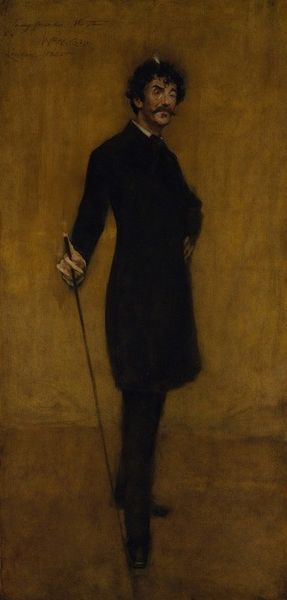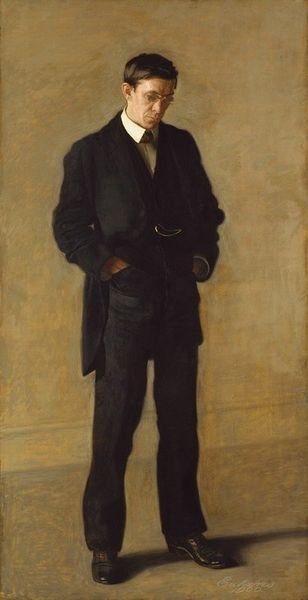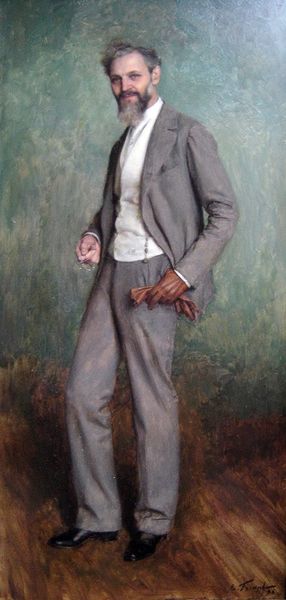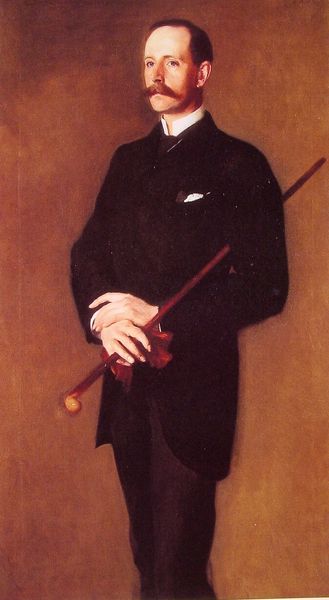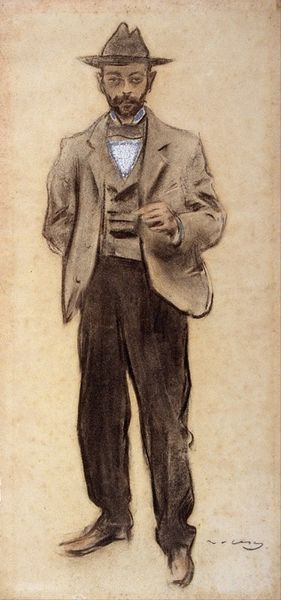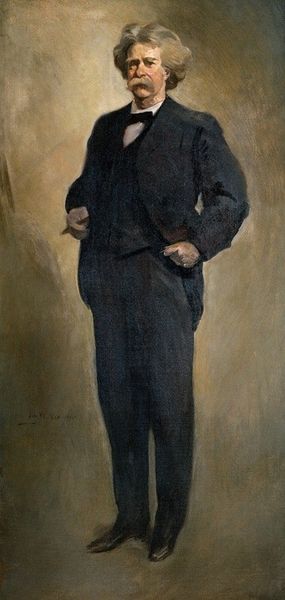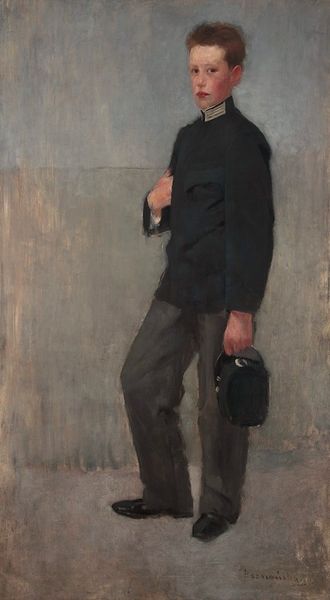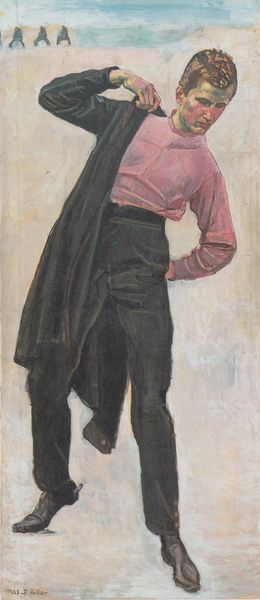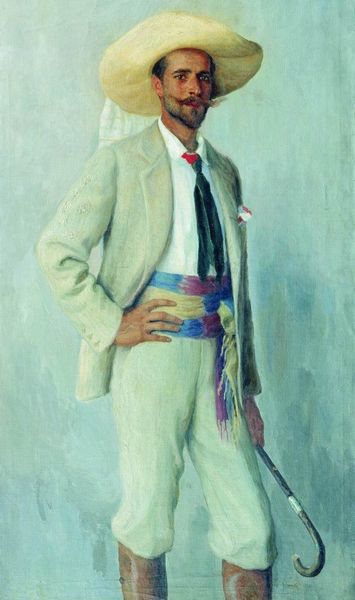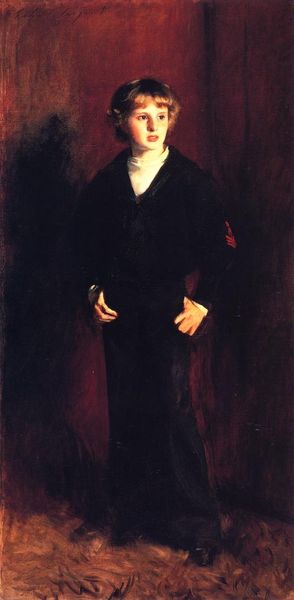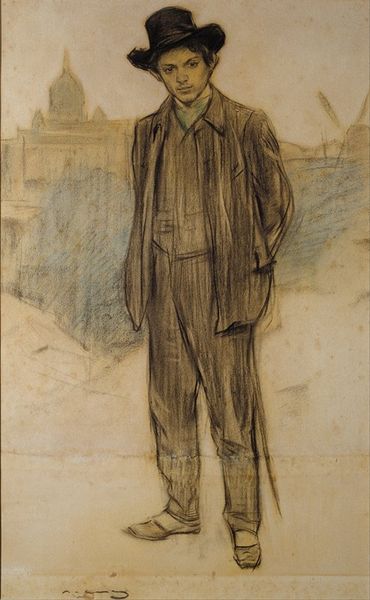
painting, oil-paint, impasto
#
portrait
#
painting
#
oil-paint
#
figuration
#
oil painting
#
impasto
#
romanticism
Copyright: Public domain
Curator: Here we have Boldini’s striking oil on canvas, "Portrait of the Comte de Rasty." Notice the bold strokes, particularly in the background, which give it a lively energy. Editor: My eye is immediately drawn to his somewhat theatrical pose and gaze. There's an almost melancholic arrogance about him. What symbols of power are embedded here? Curator: The Comte de Rasty was part of that high society circle Boldini so brilliantly captured. It is interesting that you mention power, because Boldini often painted members of this milieu and used the format of portraiture to participate in building their legacies and projecting that very power through representation. Note the top hat and the cane, so indicative of status in those circles. Editor: Absolutely. The cane isn't just functional, it's a scepter of sorts, further emphasized by his poised posture, his hand assertively on his hip. It’s interesting to consider, isn't it, what that affected air, bordering on weariness, signals about the leisured class he represents? There’s a world-weariness about him, but it's hard to tell if that is personal or constructed as a reflection of his status. Curator: That’s a brilliant question to raise. Boldini often straddled that line between flattering the sitter and injecting subtle social commentary. The Comtes flamboyant style—the sharply tailored jacket, patterned trousers— speaks volumes. Editor: He certainly communicates an era on the cusp of great change. You have the finery of the old aristocracy but perhaps a hint of fatigue? Curator: I agree. The overall impression is one of careful construction. These elements point towards both pride and performance. I think understanding who Boldini painted helps us better interpret why. He moves between representation and creation. Editor: Yes, his portrait almost transforms his sitters into archetypes, revealing underlying themes and desires of his world and that particular society. The artist and sitter actively participate in forming the image, imbuing them with timeless and telling emblems. Curator: Indeed, it highlights the intricate dance between individual identity, societal expectation, and the artistic choices of the painter. Editor: So we’re really not just looking at a likeness, but rather, a complex symbol representing a fragment of a past society, constructed and coded by its conventions and, importantly, Boldini's critical and commercial role in its projection. Curator: A great synthesis of Boldini's technical talent, the sitter's social standing, and the broader social theater in which they both operated. Editor: Exactly, and what starts as observation often evolves into profound and multifaceted insights on identity and society.
Comments
No comments
Be the first to comment and join the conversation on the ultimate creative platform.

